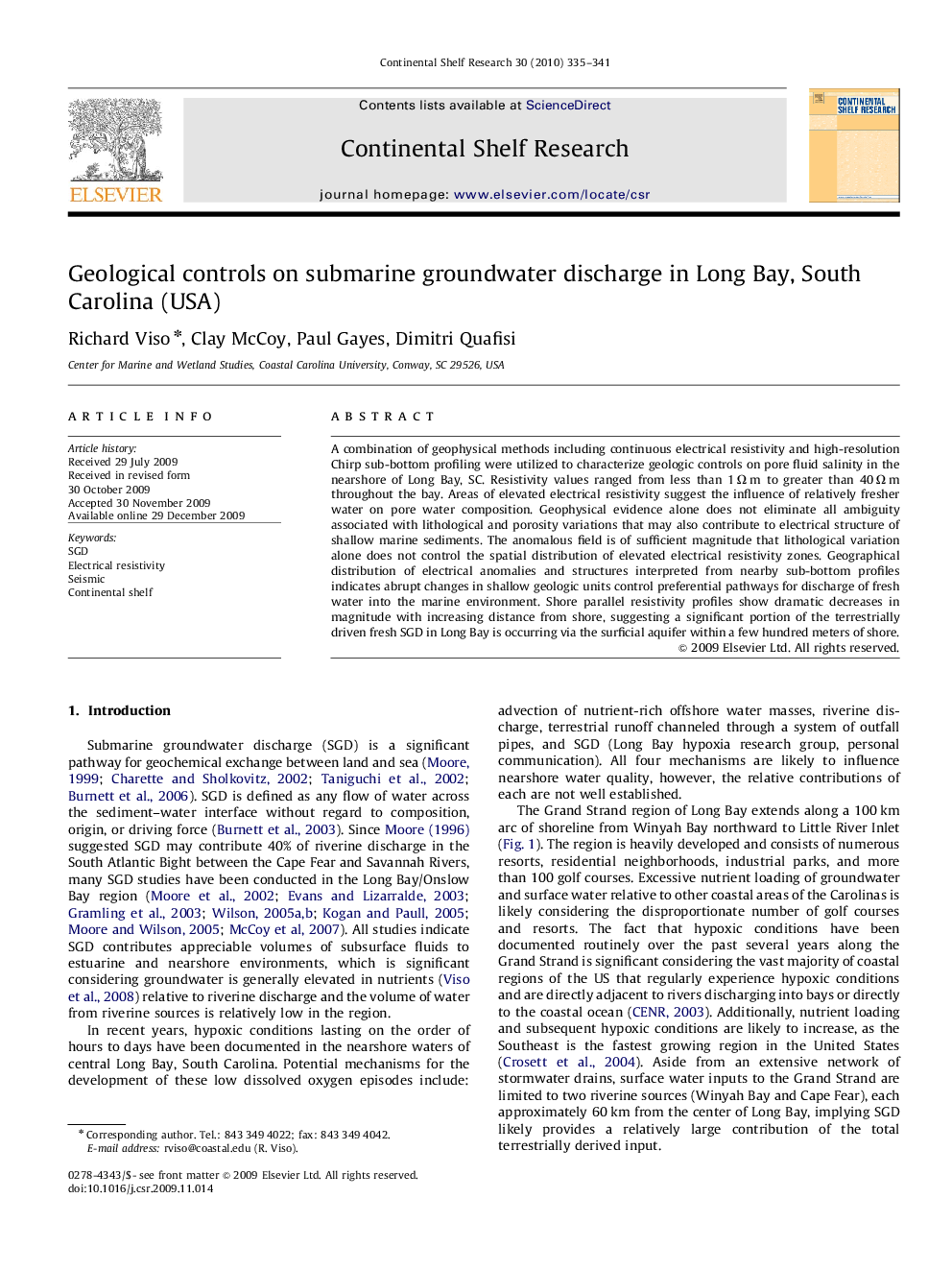| Article ID | Journal | Published Year | Pages | File Type |
|---|---|---|---|---|
| 4533014 | Continental Shelf Research | 2010 | 7 Pages |
A combination of geophysical methods including continuous electrical resistivity and high-resolution Chirp sub-bottom profiling were utilized to characterize geologic controls on pore fluid salinity in the nearshore of Long Bay, SC. Resistivity values ranged from less than 1 Ω m to greater than 40 Ω m throughout the bay. Areas of elevated electrical resistivity suggest the influence of relatively fresher water on pore water composition. Geophysical evidence alone does not eliminate all ambiguity associated with lithological and porosity variations that may also contribute to electrical structure of shallow marine sediments. The anomalous field is of sufficient magnitude that lithological variation alone does not control the spatial distribution of elevated electrical resistivity zones. Geographical distribution of electrical anomalies and structures interpreted from nearby sub-bottom profiles indicates abrupt changes in shallow geologic units control preferential pathways for discharge of fresh water into the marine environment. Shore parallel resistivity profiles show dramatic decreases in magnitude with increasing distance from shore, suggesting a significant portion of the terrestrially driven fresh SGD in Long Bay is occurring via the surficial aquifer within a few hundred meters of shore.
